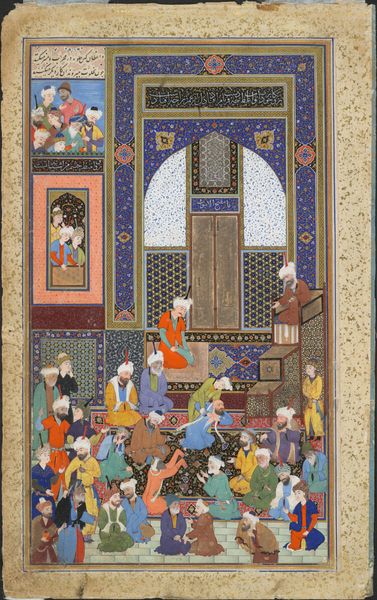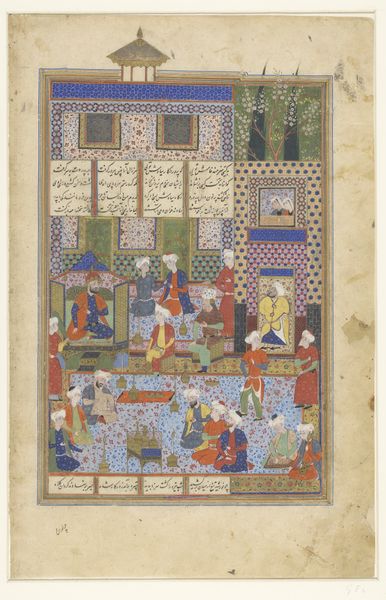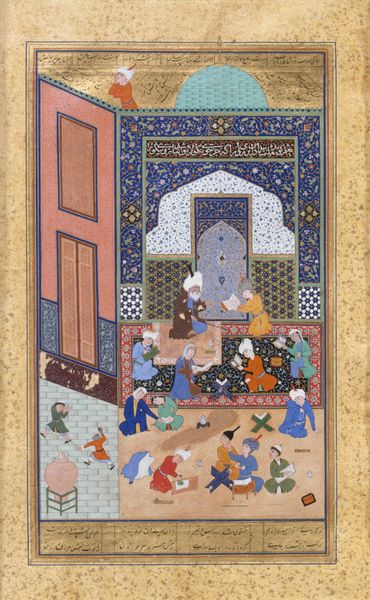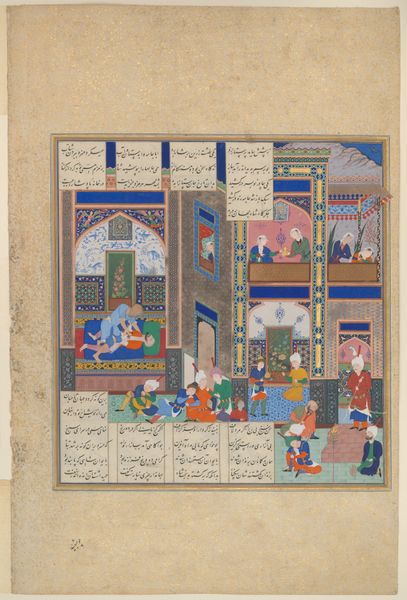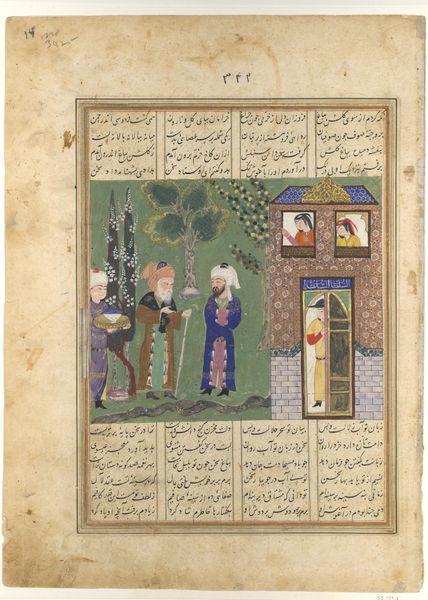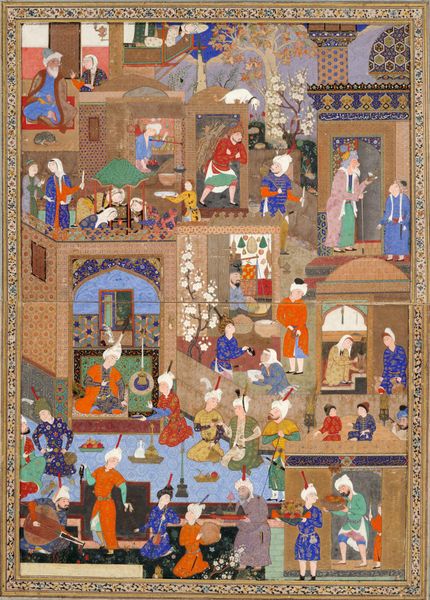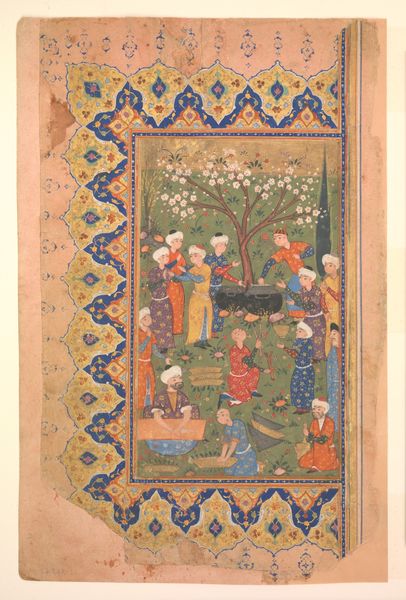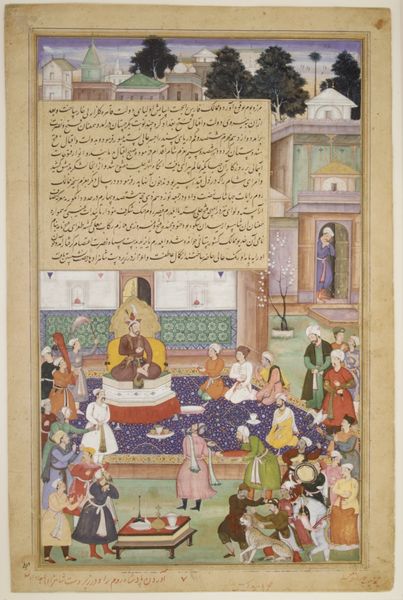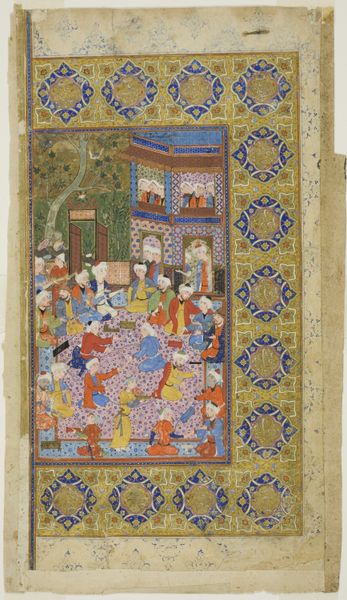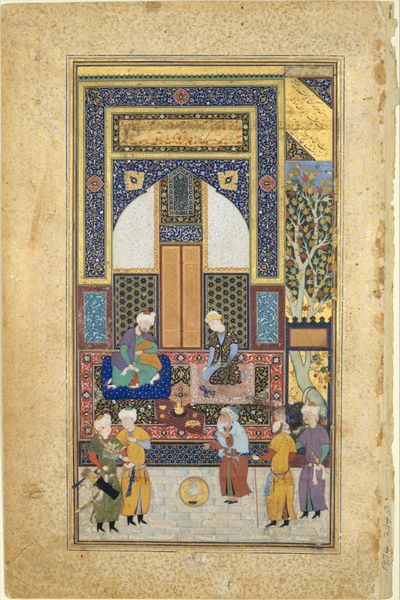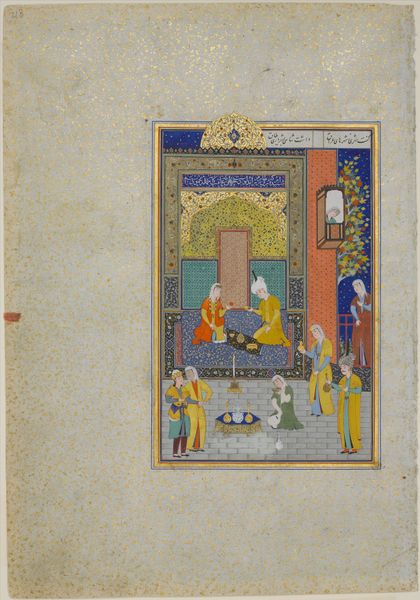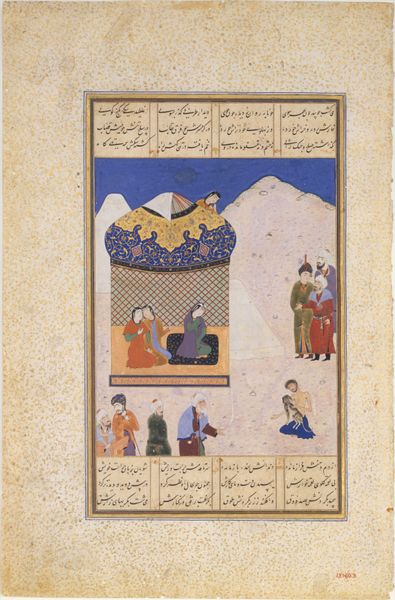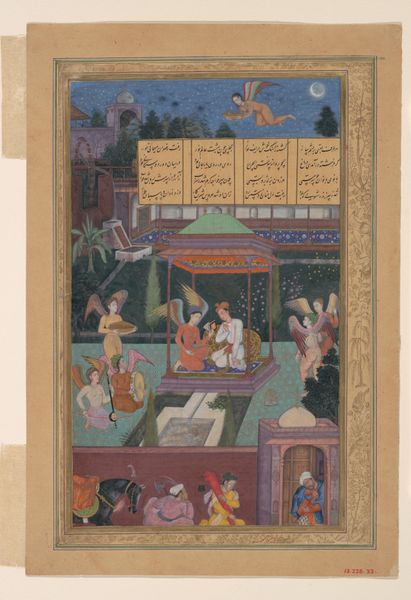
"The Great Abu Sa'ud Teaching Law", Folio from a Divan of Mahmud `Abd-al Baqi 1525 - 1575
0:00
0:00
painting, watercolor
#
portrait
#
water colours
#
painting
#
book
#
bird
#
watercolor
#
men
#
islamic-art
#
history-painting
#
academic-art
#
miniature
Dimensions: H. 10 1/4 in. (26 cm) W. 6 in. (15.2 cm)
Copyright: Public Domain
Editor: Here we have "The Great Abu Sa'ud Teaching Law," a folio from a Divan of Mahmud `Abd-al Baqi, likely made between 1525 and 1575. It's currently held at the Metropolitan Museum of Art. It feels incredibly detailed and almost dreamlike with the animals bordering the page. What catches your eye about it? Curator: Immediately, the composition commands attention. Notice how the figures are arranged – the central figure of Abu Sa'ud is slightly elevated, drawing our eye to his presence. The artist uses color to define space. What do you observe about the palette and its effect on depth and perspective? Editor: Well, the blues and reds are vibrant, almost jewel-toned. But the figures feel a bit flat, lacking shadows to give them dimension. Curator: Precisely. This intentional flattening contributes to the overall decorative quality, characteristic of many miniatures. The arrangement of figures, although seemingly informal, creates a balanced visual rhythm. Also, did you observe the detailed flora and fauna around the margin and above? What’s your take? Editor: The animals around the frame are quite elegant, if subtle. The whole image feels meticulously planned. So, even though it depicts a supposedly casual teaching scene, every element feels very controlled. Curator: Your reading resonates with a formalist understanding, valuing internal structure. The interplay of line, color, and form dictates its aesthetic. Editor: This emphasis on form and composition is really insightful, helping me appreciate the artwork beyond its historical context. Curator: Indeed, a formalist lens directs our focus toward the intrinsic artistic language of the work.
Comments
No comments
Be the first to comment and join the conversation on the ultimate creative platform.
